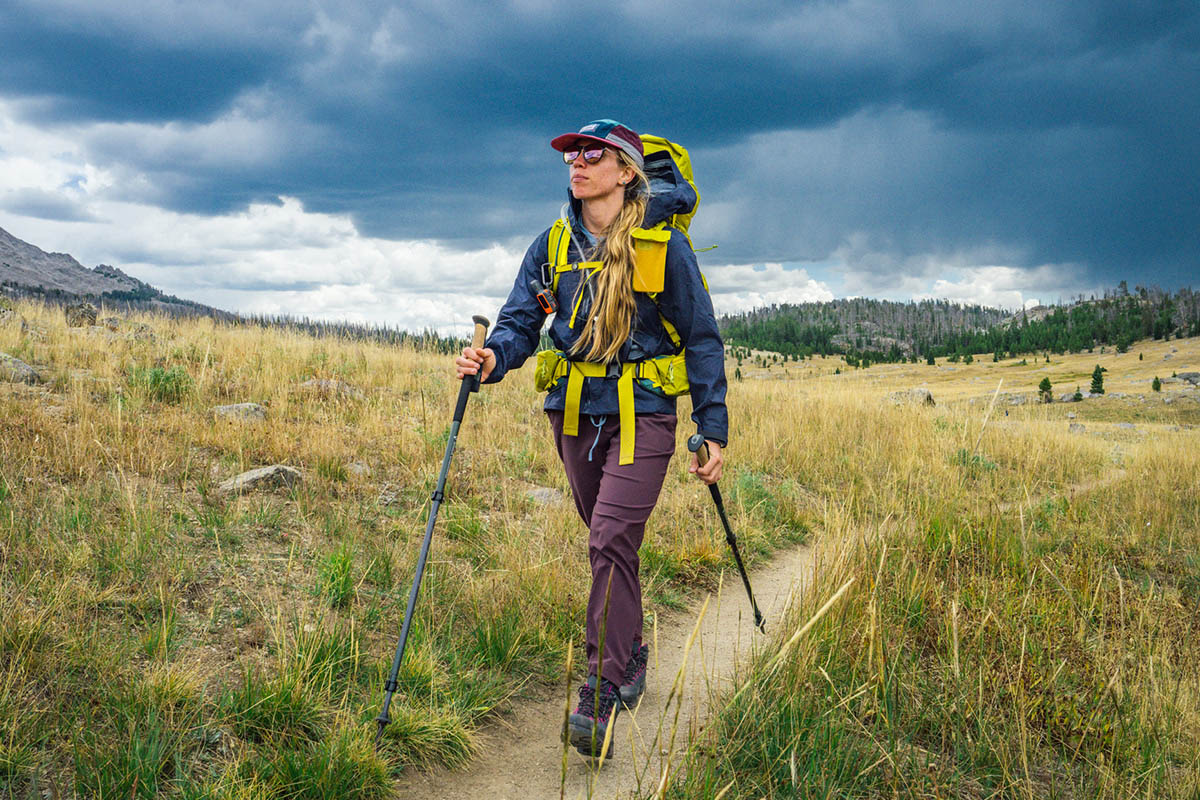
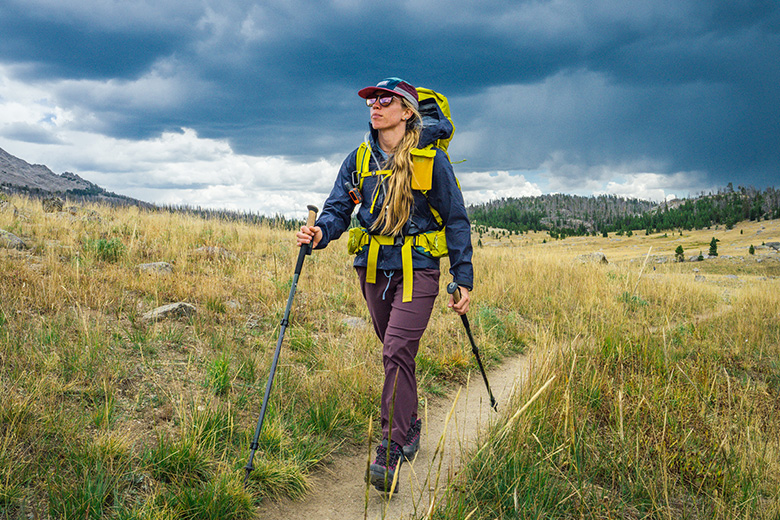
Price: $500
Weight: 10.6 oz. (women’s)
Waterproofing: 3L Gore-Tex ePE
What we like: Top-notch protection and build quality in a streamlined but thoughtful package.
What we don’t: Significantly pricier than most competitors; those who are in between sizes or want to layer heavily underneath should consider sizing up.
See the Women's Beta SL Jacket See the Men's Beta SL Jacket
North Vancouver-based Arc’teryx is no stranger to harsh mountain weather, and their Beta hardshell collection is well equipped to handle rough and rowdy conditions. We recently put the aptly named Beta SL (short for “superlight”) to the test on a late-summer backpacking trip in Wyoming’s Wind River Range, where the shell proved itself as another highly dependable design with a keen attention to detail. You’re paying a steep premium for the Arc’teryx name, but the top-notch build quality and weather protection—along with a low weight and small packed size—are hard to beat for demanding backcountry use. Below are my thoughts on the Beta SL Jacket. To see how it stacks up to the competition, see our articles on the best hardshell jackets, best rain jackets, and best women’s rain jackets.
Editor’s note: The Beta SL replaces the Beta Lightweight in Arc’teryx’s lineup, with the biggest difference being the transition to Gore’s more sustainable ePE waterproof membrane. Impressively, the Beta SL is also a couple ounces lighter despite boasting a thicker shell fabric (40D by 70D compared to the Beta Lightweight's 40D exterior).
We’re rarely disappointed in the protectiveness of Arc’teryx rain shells, and the Beta SL Jacket is another dependable and fully weather-ready design. In terms of construction, you get a premium 3-layer Gore-Tex ePE build and a quality durable water-repellent (DWR) coating for fending off light moisture. It’s worth noting that the ePE membrane is relatively new to the market but has performed similarly to their tried-and-true (but less eco-friendly) standard membrane throughout testing. For reference, the shell did an admirable job of sealing out heavy moisture and chilly gusts on our 25-mile loop in the Wind River Range while keeping my midlayer (the Outdoor Research Transcendent Down Hoodie) perfectly dry. Given these experiences, I expect the Beta SL will be a nice piece for longer ski tours, too—it’s competitively light and packs down small but offers enough protection to keep me dry and warm in harsh winter weather, which is no easy feat (more in “Weight and Packability” below).
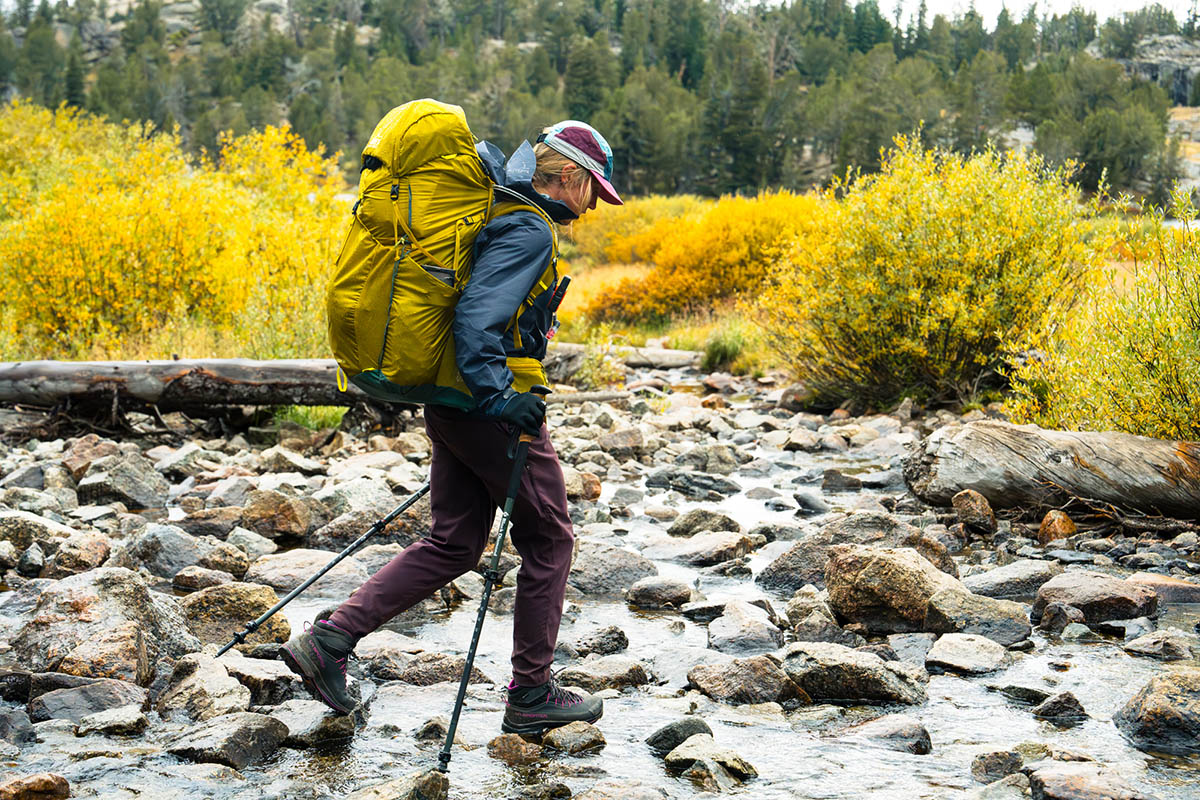
Along with its quality waterproofing, the Beta SL comes equipped with several features to batten down the hatches in inclement weather. First is Arc’teryx’s well-loved StormHood, which is generously sized, easily adjustable, and stays securely in place even in strong winds. It also offers great coverage without impeding vision—with the collar fully zipped, only my nose and eyes are left exposed to the elements. You also get Velcro cuff adjustments that can be loosened to fit over undercuff gloves or tightened to snug down underneath bulkier gauntlet-style designs. When cinched tight, the cuffs effectively keep gusts and moisture from creeping in at the wrists. It’s a similar story at the hem, which features dual drawcords for sealing out drafts. Finally, all of the zippers are highly water-resistant—enough so that I frequently trust them to keep my phone dry and protected.
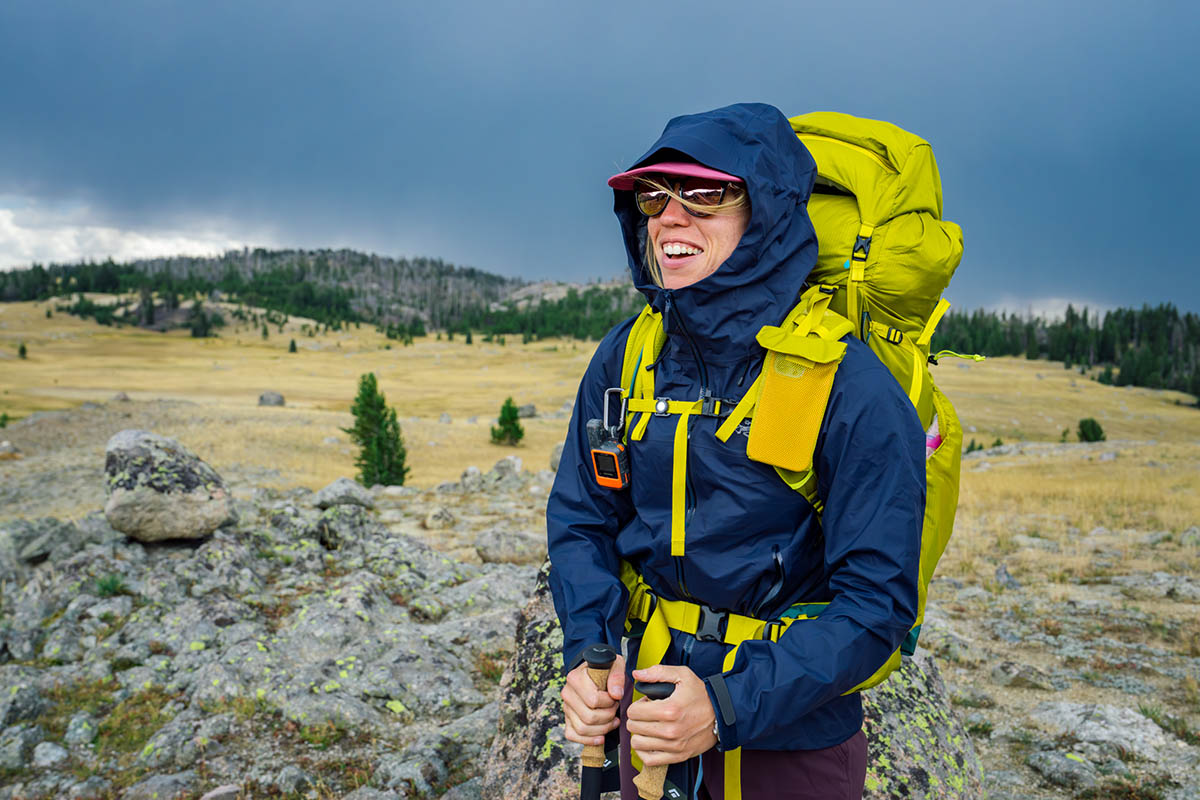
No waterproof shell is completely breathable, but the Beta SL’s thinner construction and pit zips allowed me to keep it on longer than expected during activity. For reference, I find most waterproof shells to be too clammy when exerting, but temperatures in Wyoming were very moderate (hovering in the low 40s to mid 50s Fahrenheit), and I was able to stay comfortable while hanging around camp and hiking in inclement weather. I did have to open up the pit zips to dump excess heat on steeper sections of trail, but this allowed for ample airflow in the cooler conditions we experienced. That said, in summertime heat or during extended bouts of exertion, I’d likely sweat out of the Beta SL quickly, which is true of most hardshell jackets.
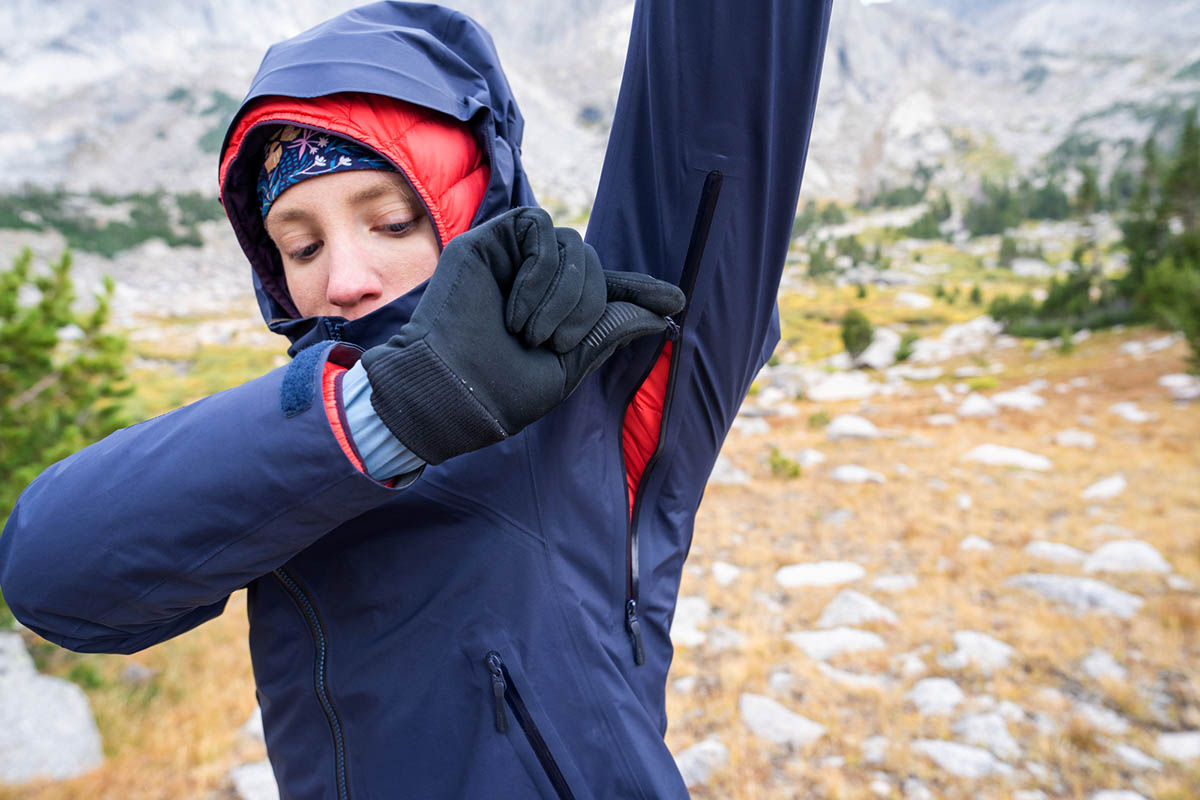
At 10.6 ounces for the women’s version, the Beta SL Jacket lives up to its “superlight” designation. For comparison, it undercuts burlier hardshells like Arc’teryx’s own Beta AR (13.8 oz.) and Patagonia’s Triolet Jacket (1 lb. 1.6 oz.) while checking in a little heavier than minimalist designs like Patagonia’s M10 Storm (9.9 oz.) and running-focused Storm Racer Jacket (6.3 oz.). In my opinion, this is a great middle ground: light enough to bring into the backcountry but not overly compromised in terms of features like the latter two shells.
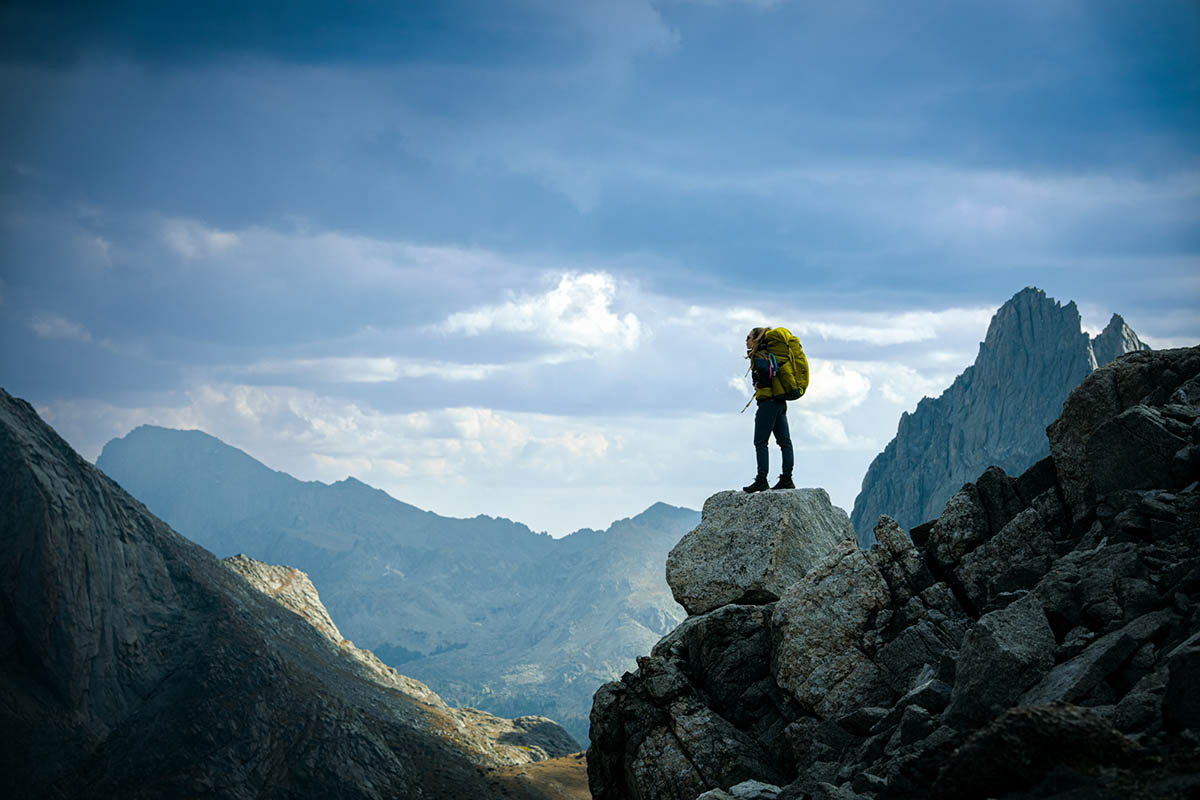
It’s a similar story with packability. Rolled into its own hood, the Beta SL is smaller than a 32-ounce Nalgene bottle. In Wyoming, I was easily able to stuff the shell into the front mesh pocket of my very full backpacking pack for easy access in shifting conditions. All told, I have no qualms about taking it on future backpacking trips, and its low weight and excellent packability make it viable for multi-day ski tours, too.
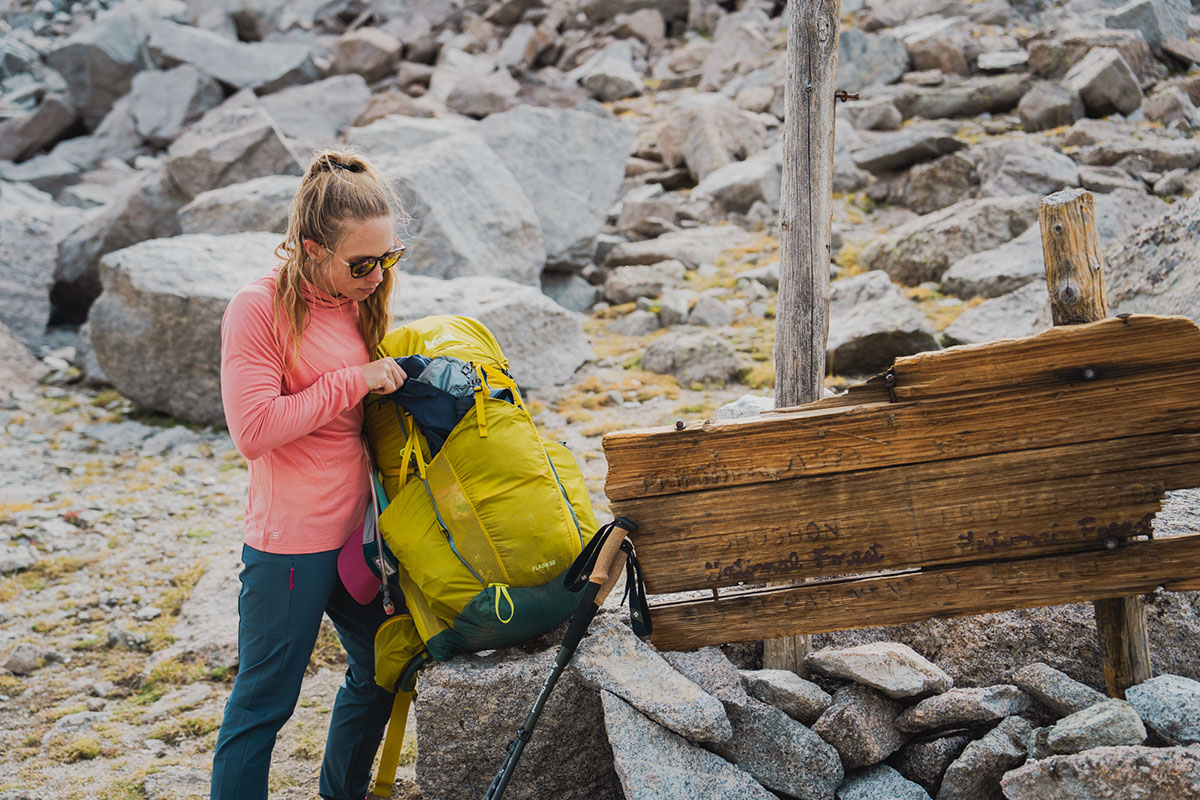
Like the outgoing Beta Lightweight that it replaces, the Beta SL Jacket features Gore’s C-Knit backer, which offers a nice dose of next-to-skin comfort. In addition to being relatively soft (especially when I’m wearing only a tank top or T-shirt underneath), the liner is noticeably less crinkly and noisy than most traditional 3-layer hardshells. Arc’teryx also included a fleece chin guard for preventing chafing against cold skin, and I’ve found there to be ample mobility for tasks like setting up camp or loading gear into a rooftop cargo box. Along with its light and streamlined feel covered above, the Beta SL is a very easy-to-wear piece.
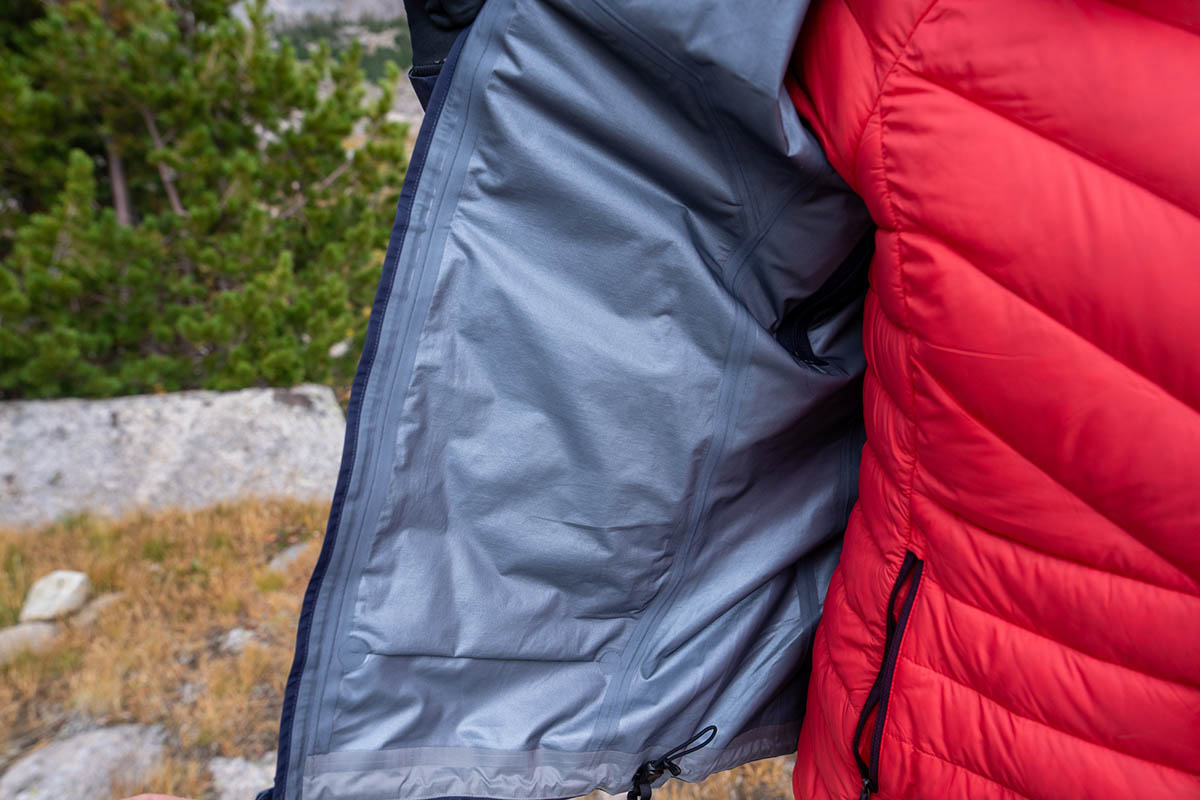
I’ve rarely had durability complaints with Arc’teryx hardshells over the years, and the Beta SL Jacket is yet another well-built and hardwearing piece. It’s worth noting that Arc’teryx upped durability compared to the outgoing Beta Lightweight, transitioning from a 40-denier (D) face fabric to a beefier 40D by 70D material. While still on the thinner end, the Beta SL has proven to be incredibly tear- and abrasion-resistant throughout testing. In addition to being haphazardly shoved into and pulled out of the front pocket of my pack frequently, my shell has been subjected to rubbing against sharp granite boulders and being used as a seat on wet rocks. It even spent a short stint substituting a rain cover since my pack didn’t come with one. Despite the abuse, everything is holding up flawlessly thus far. My only concern is that the Velcro cuff adjustments are fairly thin and strike me as susceptible to failure over time. But I haven’t had any issues to date, and overall, I expect the Beta SL to last for many seasons to come.
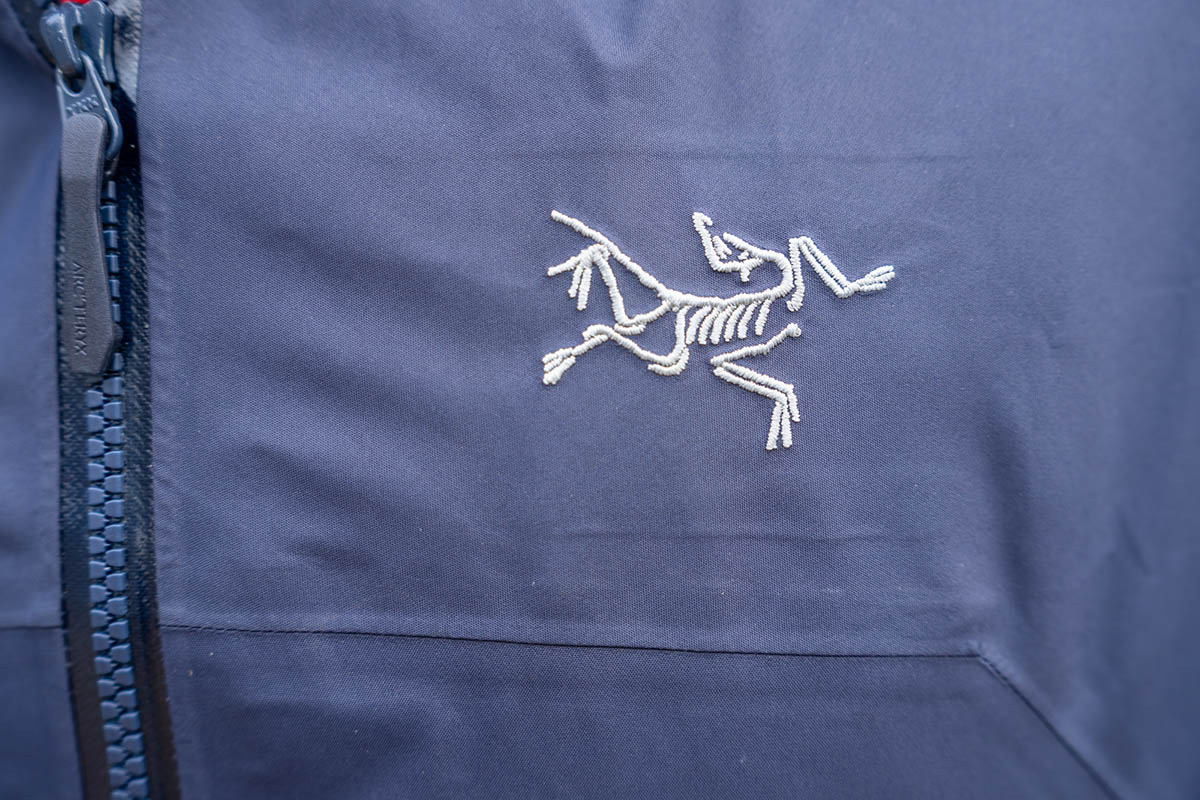
Arc’teryx has their hood designs dialed in, and this holds true with the Beta SL’s well-executed StormHood. For starters, the hood is helmet-compatible, fitting comfortably over a bulky ski helmet, and it’s easy to snug down over a ball cap or beanie via the three toggles: one at the rear to tighten the halo and two at the front of the collar for cinching the aperture. The rear drawcord does require two hands to operate, but it’s very smooth and easy to do even with gloves on. Additionally, the hood stays securely in place when snugged down—even in strong winds—and provides ample coverage for protecting my face from the elements. Finally, Arc’teryx included a hidden Recco reflector that allows rescuers to pinpoint your location in the event of an emergency.
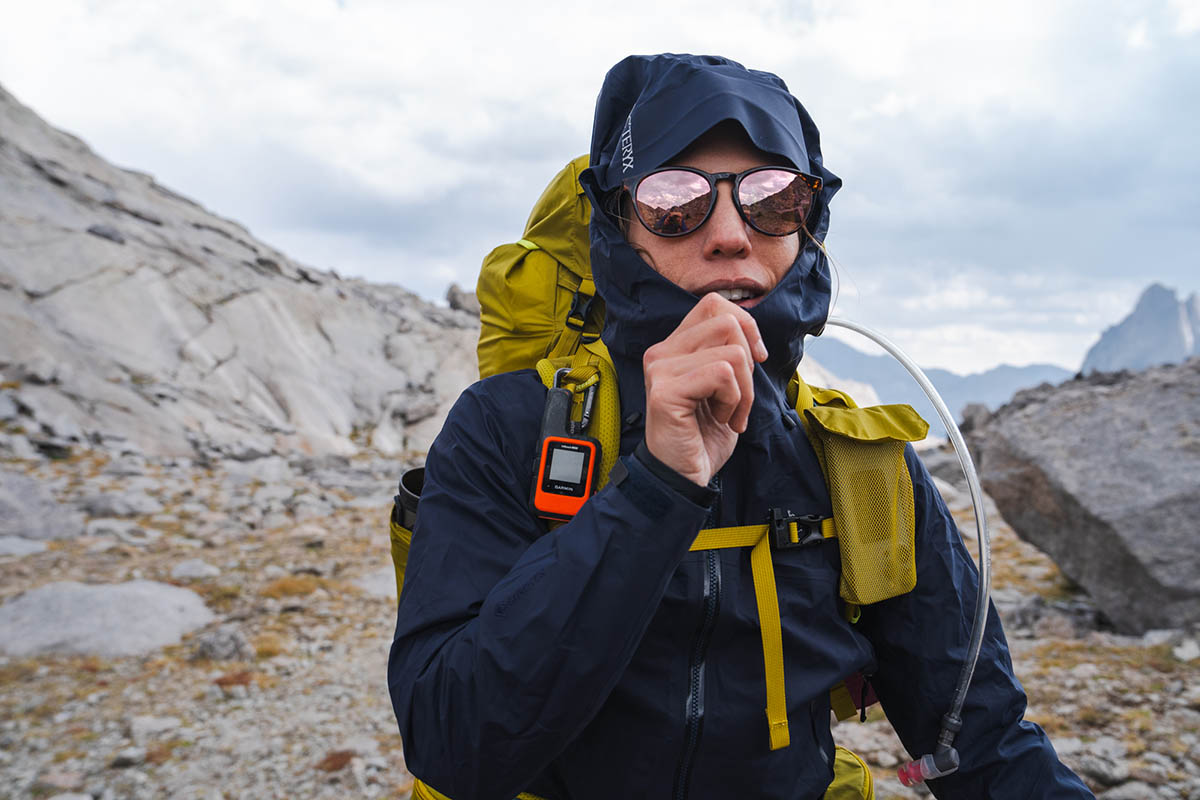
In terms of storage, the Beta SL sticks to the basics with three zippered pockets. The two large hand pockets are great for stashing items like gloves or warming cold hands, and they’re positioned high enough to remain accessible underneath a backpack hipbelt or climbing harness. The internal chest pocket is a nice spot for valuables and other small items I want to keep secure, such as keys or my Garmin inReach Mini, although it was too snug to fit my iPhone 13 in its case. I’d prefer an internal dump pocket or two for ski touring, but I understand Arc’teryx’s decision to omit them in order to keep things light and streamlined. For most backcountry pursuits, the Beta SL’s storage layout is perfectly adequate.
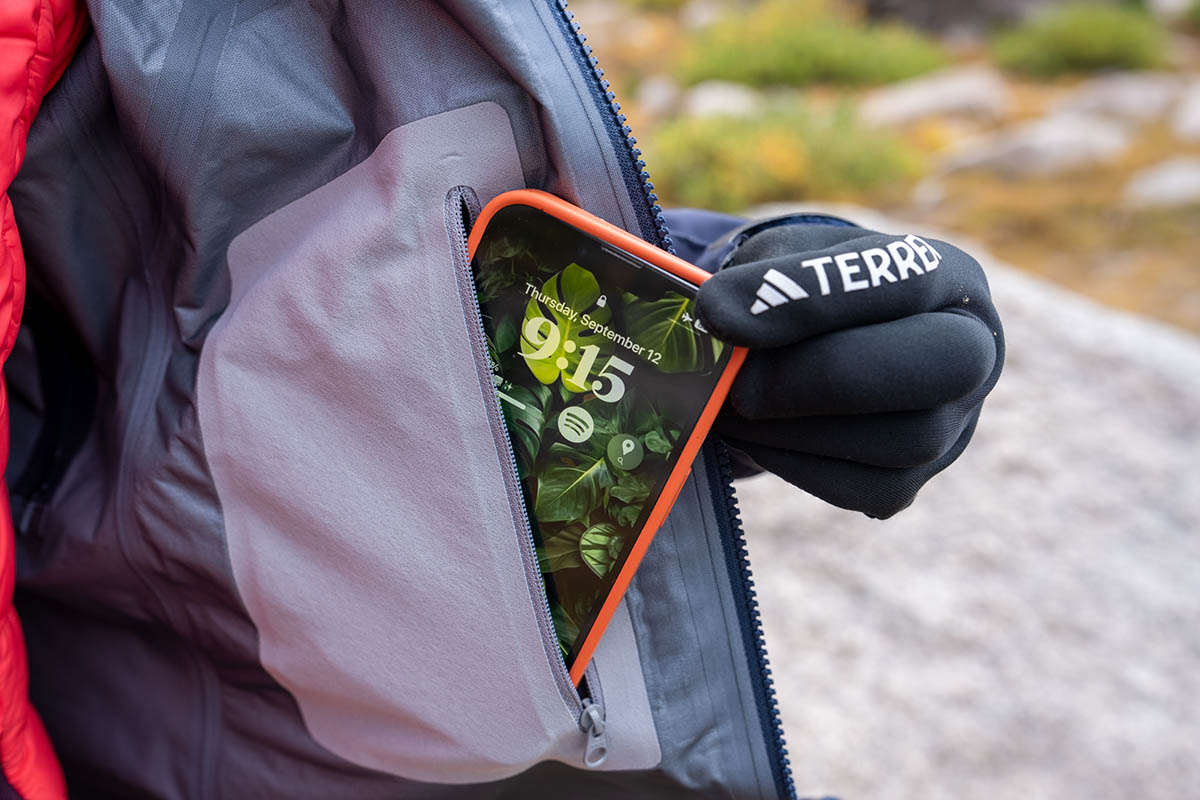
I typically wear a women’s small in Arc’teryx shells, and that size in the Beta SL fit true (for reference, I’m 5’6” and around 135 lb.). Arc’teryx lists the shell as “fitted,” which feels like an accurate designation: Layered over a lightweight down jacket, I found the shell to be a little snug along my upper torso (I have pretty broad shoulders) but still had ample mobility to set up camp and move around comfortably. That said, if you’re between sizes or plan to layer heavily underneath, it may be worth sizing up. The hem length was also perfect for keeping the jacket from riding up under the hipbelt of my pack, and the cuffs extend a couple inches beyond my wrists for great coverage when reaching overhead. I do wish Arc’teryx had included a two-way main zipper to prevent bunching up when sitting or bending over—and to provide easy access to a harness when belaying—but it’s not a dealbreaker by any means. In the end, the Beta SL is another example of the premium and flattering fit I've come to expect from Arc’teryx.
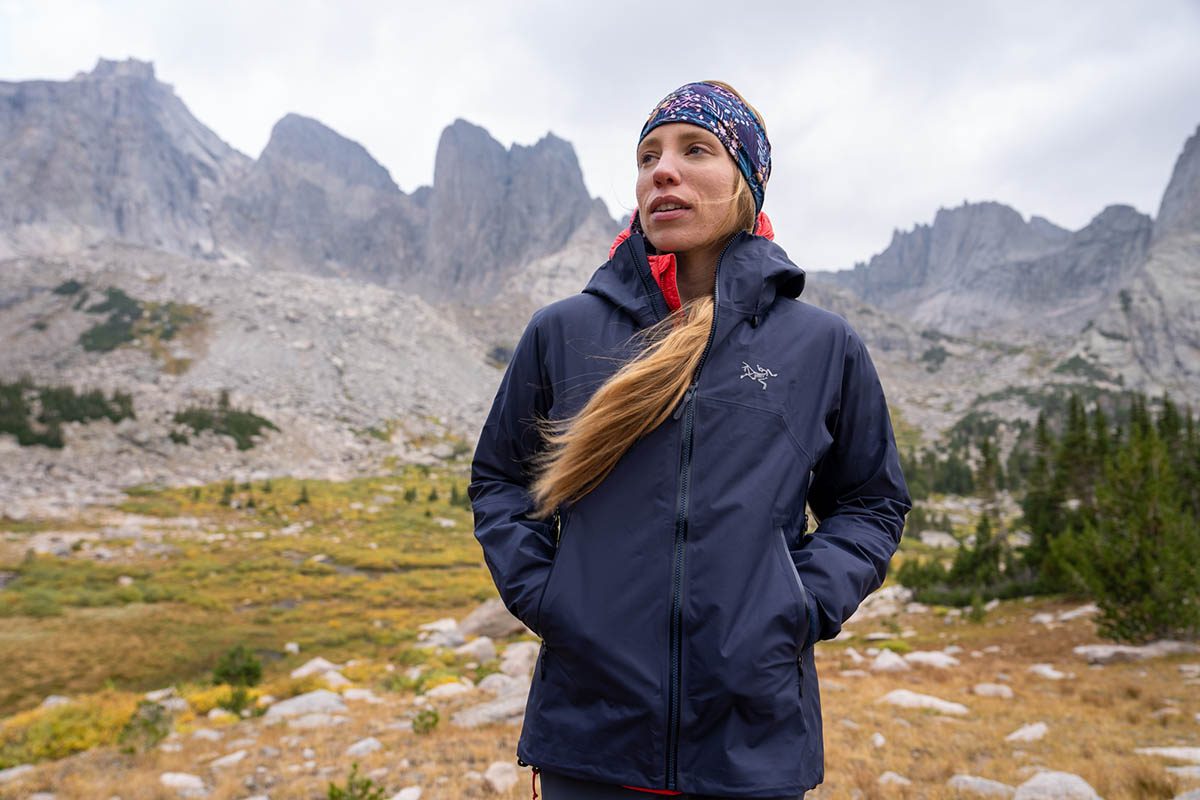
Arc’teryx has been upping their sustainability focus of late, and the Beta SL Jacket is a nice reflection of their progress. First and foremost, the shell uses Gore’s latest ePE membrane, which is made from recycled nylon and PFAS-free. The latter stands for per- and polyfluorinated substances, which are known as “forever chemicals” due to their inability to break down over time. The Beta SL is also certified to the Fair Trade standard, which indicates that Arc’teryx put extra money into production to ensure workers are compensated fairly and have access to safe working conditions. The brand has committed to expanding this certification to at least 80% of their product line by 2025, which is a commendable goal.
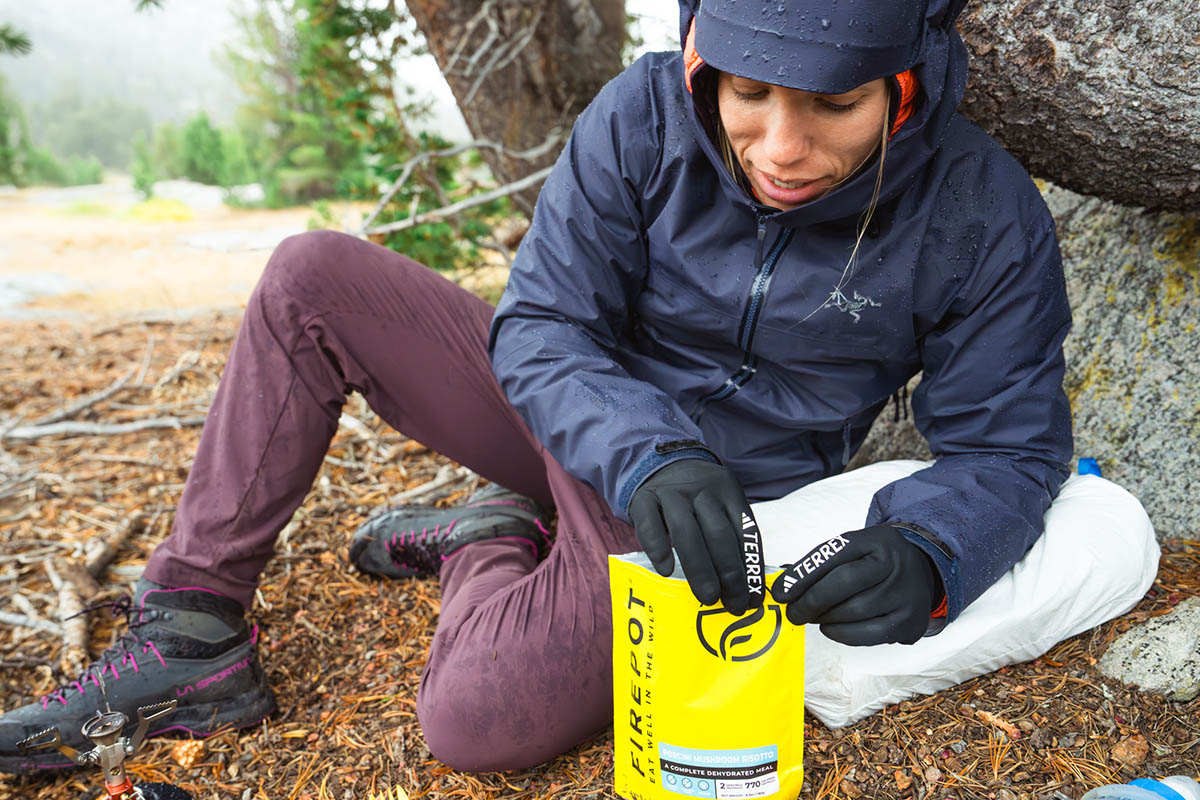
I brought the women’s Beta SL to Wyoming for testing, and Arc’teryx makes a nearly identical men’s version for the same price. Compared to the women’s model, the men’s Beta SL Jacket is a little heavier at 12 ounces and sold in different colorways but retains an identical feature set and overall construction, including the 40D by 70D Gore-Tex with C-Knit build, three total pockets, and Arc’teryx’s well-executed StormHood. We haven't had a chance to test the men's version yet, but given the similarities between the two designs, we expect overall performance to be largely similar.
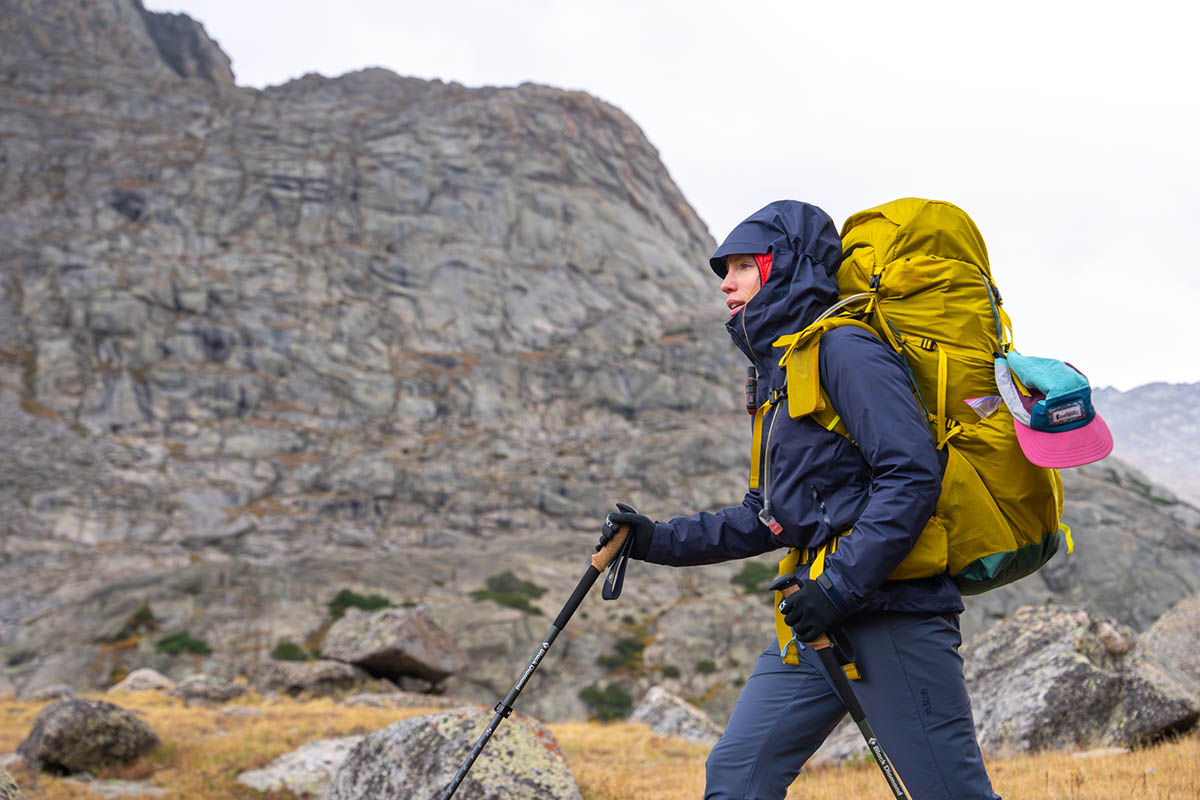
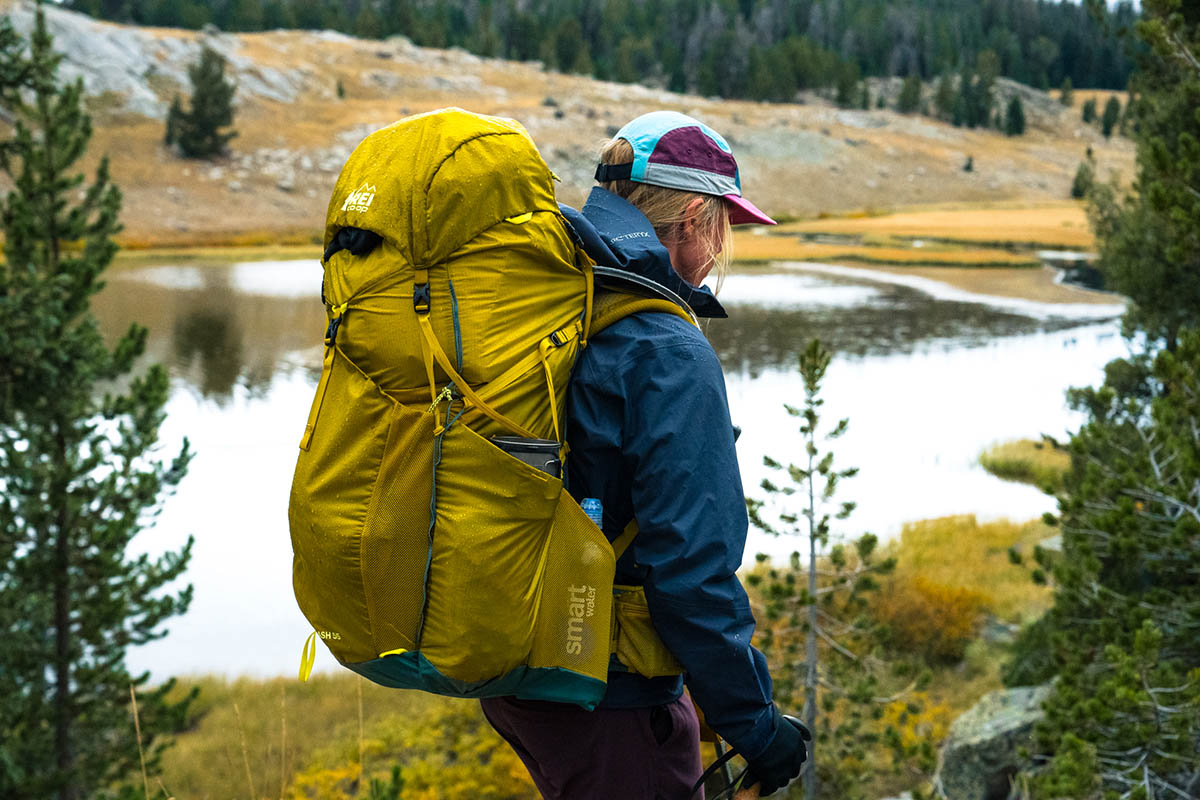
| Jacket | Price | Weight | Waterproofing | Denier | Pit Zips | Pockets |
|---|---|---|---|---|---|---|
| Arc'teryx Beta SL Jacket | $500 | 10.6 oz. | 3L Gore-Tex ePE | 40D x 70D | Yes | 2 hand, 1 internal |
| Arc'teryx Beta AR Jacket | $600 | 13.8 oz. | 3L Gore-Tex Pro | 40D & 80D | Yes | 2 hand, 1 internal |
| Arc'teryx Beta Jacket | $400 | 10.6 oz. | 3L Gore-Tex ePE | 80D | No | 2 hand, 1 internal |
| Norrøna Falketind GTX | $549 | 11.5 oz. | 3L Gore-Tex ePE | 40D | Yes | 2 hand, 1 internal |
| Outdoor Research Aspire 3L | $249 | 13.9 oz. | 3L AscentShell | 40D | Yes | 2 hand, 1 chest |
Arc’teryx’s rain shell collection is undeniably extensive, and their Beta AR (short for “all round”) is our top-rated hardshell jacket this year. For $100 more than the Beta SL, the Beta AR Jacket boasts an upgraded Gore-Tex Pro membrane with their Most Rugged Technology, along with beefy 80D reinforcements in high-wear areas (the rest of the shell uses a 40D fabric). It also has a more generous “regular” fit for layering heavily underneath, along with a drop hem for additional coverage at the rear. That said, we prefer the Beta SL’s StormHood over the Beta AR’s DropHood design—the latter leaves a small opening at the front between the collar and hood where blowing snow can potentially build up in a storm. The Beta AR also lacks the SL’s C-Knit backer and checks in 3.2 ounces heavier. In the end, both are skillfully built and highly capable hardshells, and a final decision will come down to how you prioritize weather protection, durability, and weight.
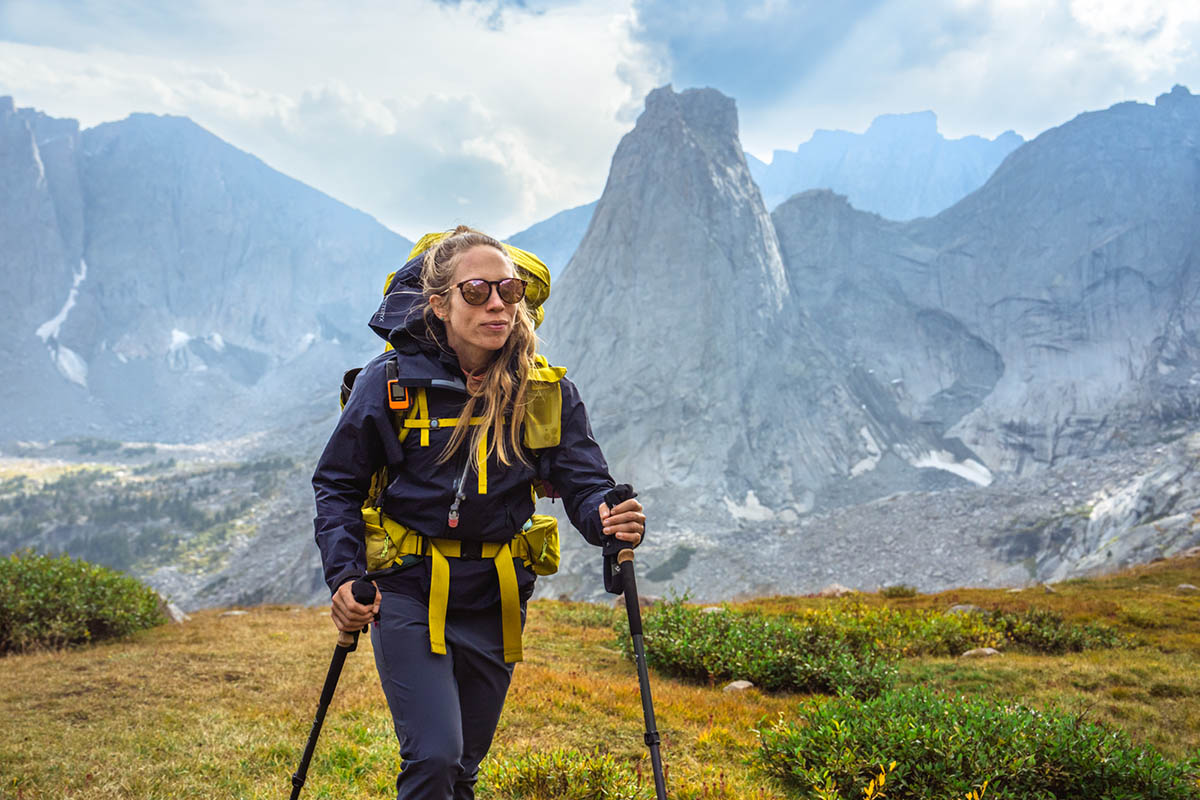
From within the same Beta lineup, Arc’teryx’s standard Beta Jacket checks in at an identical weight to the Beta SL at 10.6 ounces. It’s also cheaper at $400 while stacking up reasonably well in most other areas: You get a similar 3-layer Gore-Tex ePE build with their soft C-Knit backer for added comfort, three total pockets, and a Recco reflector for transmitting your location in the event of an emergency. However, that’s where the similarities end. While the Beta Jacket is more durable with a thicker, 80D face fabric, the hood design is more basic and not helmet-compatible, the fit is less streamlined, and you don’t get pit zips for dumping heat while on the move. These features aren’t must-haves for everyone, but we consider the Beta SL’s upgrades worth the price penalty.
Norrøna is another technical brand with a healthy selection of mountain-ready hardshells, and their competitor to the Beta SL is the Falketind Gore-Tex Jacket. For $49 more than the Beta SL, the Falketind offers comparable protection with a 3-layer Gore-Tex ePE construction. The feature set also lines up well, including generously sized pit zips for quickly regulating temperature, harness-friendly hand pockets and an internal zippered pocket, and ample adjustability for battening down the hatches. The Norrøna is slightly heavier than the Beta SL at 11.5 ounces and has an even thinner 40D shell fabric, but the longer hem arguably makes it the better pick for skiing. However, the Falketind’s technical look is no match for Arc’teryx’s sleek fit and finish, and the Beta SL offers similar all-around performance at a lower price and weight.
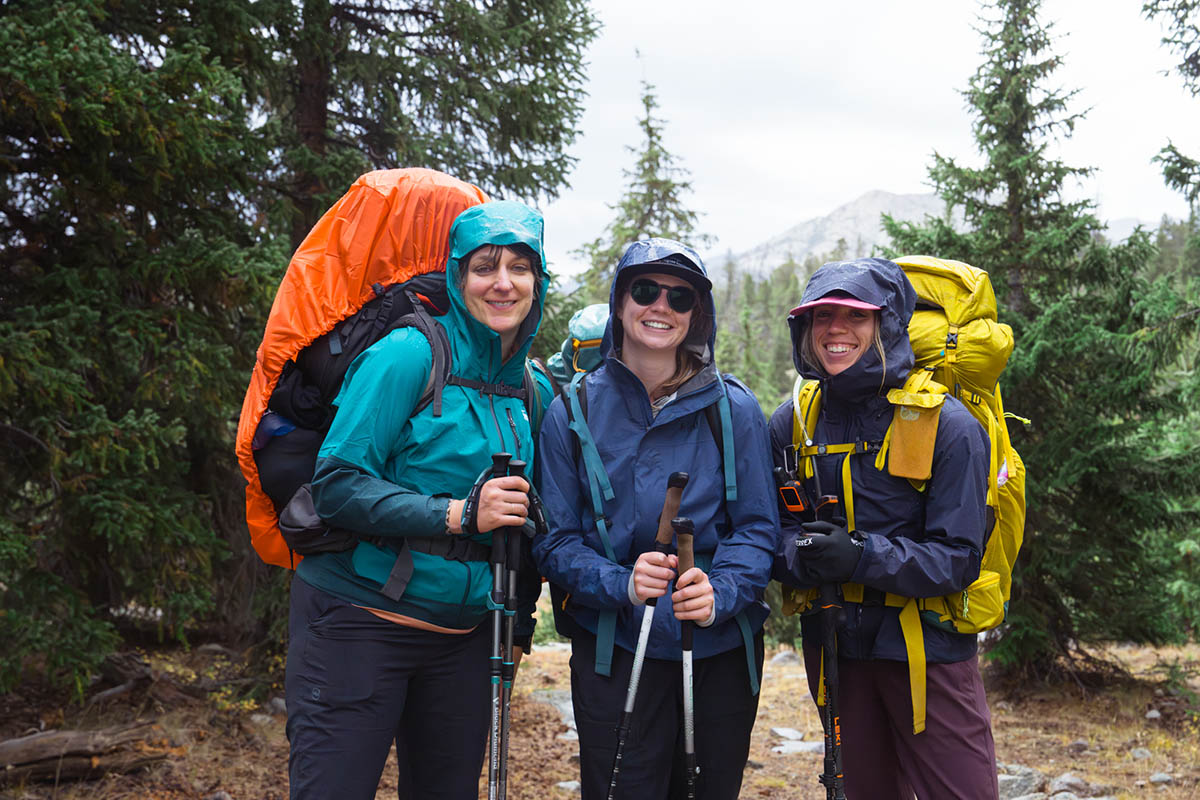
Last but not least is a far more budget-friendly alternative to consider: Outdoor Research’s Aspire 3L Jacket. In this case, OR opted for their in-house AscentShell membrane, which we’ve found to be more breathable than Gore-Tex and noticeably stretchier, too. You also get OR’s unique TorsoFlo vents, which extend from the bicep down to the hem for poncho-like venting. The Beta SL is the more technically capable option with harness-compatible hand pockets and a helmet-friendly hood, in addition to the Gore-Tex membrane that’s easier to trust in truly rough and rowdy conditions. A final difference is weight, with the Arc’teryx checking in around 3 ounces lighter. In the end, it’s hard to beat the Beta SL’s premium fit and finish, but the Aspire costs around half as much and is plenty of jacket for most hikers.
If you’re thinking about buying gear that we’ve reviewed on Switchback Travel, you can help support us in the process. Just click on any of the seller links above, and if you make a purchase, we receive a small percentage of the transaction. The cost of the product is the same to you but this helps us continue to test and write about outdoor gear. Thanks and we appreciate your support!
Depending on the seller, most products ship free in the United States on orders of $50 or more. International shipping availability and rates vary by seller. The pricing information on this page is updated hourly but we are not responsible for inaccuracies.